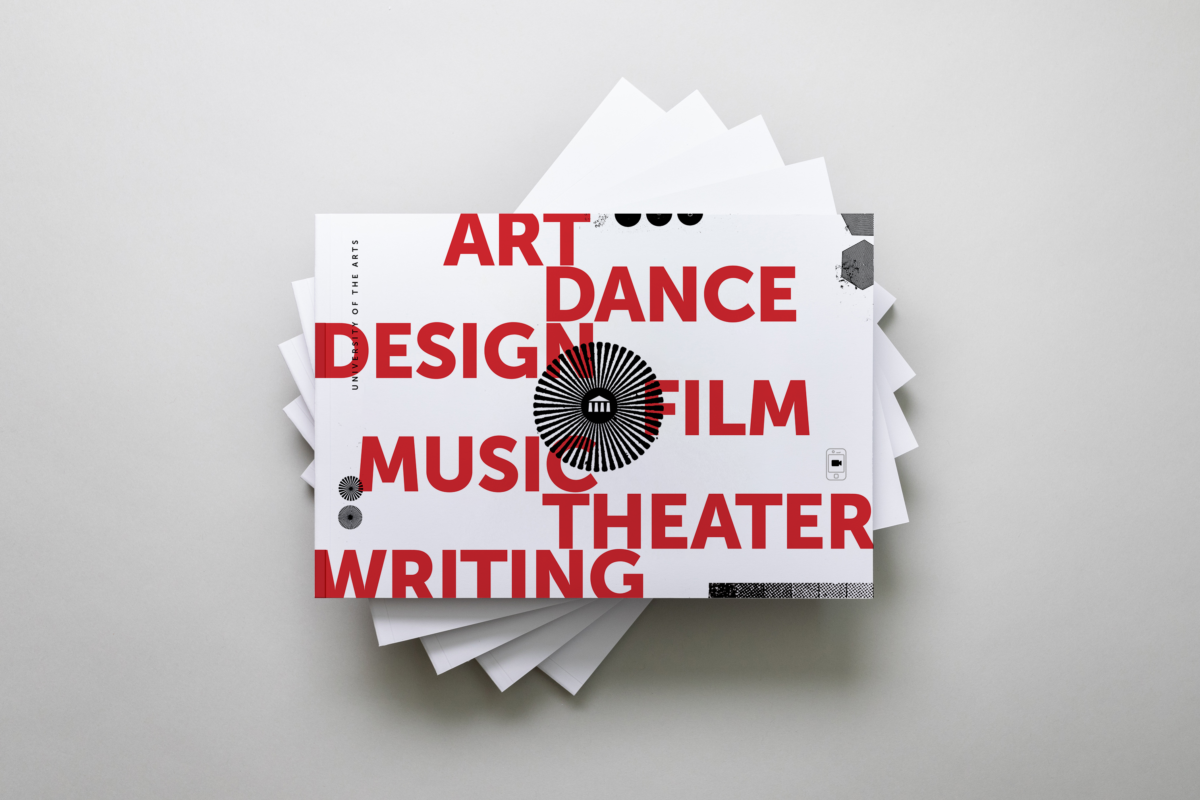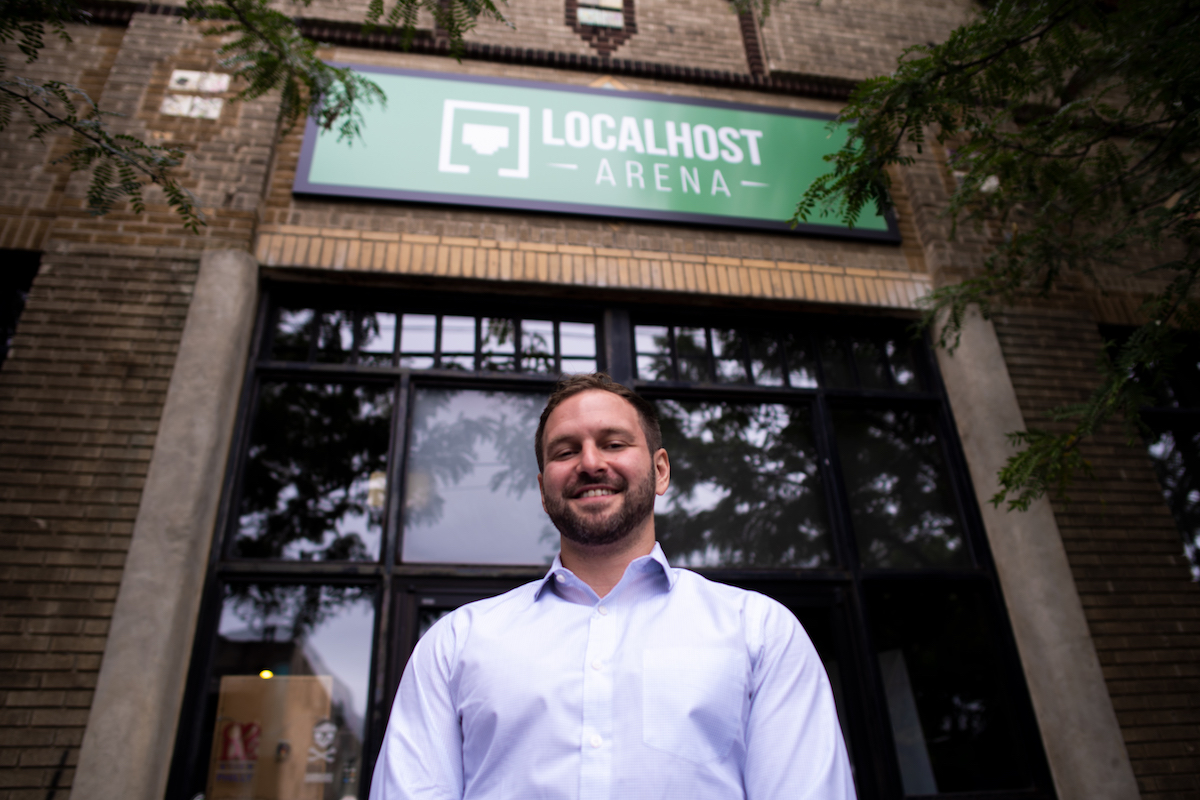In 2021, even books benefit from technical help to grab attention.
University of the Arts Design Director Ryan Penn and Media Content Director Kevin Merinsky wanted to create a way of engaging potential students that reflected the work happening at its Center for Immersive Media.
The center opened in 2019 as a flexible space for students and faculty to experiment with technology in art. It invites students to explore the fields of virtual and mixed reality, audio, performance motion-capture and human-computer interaction through collaboration across the arts, science and medicine industries.
Creating a guidebook with augmented reality capabilities made for an apt representation, the directors decided. The result is a digital component to a printed work that’s usually distributed to high schools. After opening ar.uarts.edu on your phone, hover the camera over a page and three-dimensional dancers might pop up. Or, you can watch an interview with a current student about why they chose to attend UArts.
“From a storytelling point, we wanted to distinguish ourselves from other institutions and wanted to use a digital component with motion sequences that just aren’t able to happen in a printed piece,” Penn told Technical.ly. In a play for more engagement with the resource, the design team wanted people reading the book to “experience this extra content without leaving this experience.”
With augmented reality, Merinsky saw a way to create greater access for individuals hoping to learn about UArts remotely. Designing content for this new type of guidebook presented its own challenges.
“This is not something that you can easily implement anywhere quickly,” he said. “We didn’t want people to have to install an application on their phone. We felt that would be a barrier to this experience. We put all of our eggs in the basket for a web-based application.”
Penn agreed and added that DEI advocacy and accessibility to resources are both top priorities at UArts, and having a web-based application as a guidebook has aligned with those ideas. Even better, they could involve current UArts students in developing it.
The pandemic accelerated a trend that Merinsky and his colleagues were already seeing in past few years. The strategies needed to create an augmented reality guidebook had already been considered, he said, but with people being separated during the pandemic, having a way for them to experience places not near them — in this case, potential students who live in faraway states, for instance — became that much more important.
Penn noted that this is may be the first moment many users experience augmented reality, even though it’s more accessible than virtual reality. With VR, an Oculus headset can give users an immersive visual experience, but they need to have that hardware to see it. With augmented reality, users only need their smartphones.
For the UArts students who helped work on the guidebook, the design director hopes the project can pique their interest in the potential of augmented reality to improve our lives. He said the students have been resilient after 18 months of remote learning and remain focused on their goals. That camaraderie fueled Penn’s work on the guidebook, which he hopes further develops in the years to come.
“There’s often a fear in developing new technologies,” Penn said. “We weren’t sure if we could pull it off in the beginning of this project. For students to see it behind the scenes and come to fruition, they’ll be more interested in developing technologies.”
Michael Butler is a 2020-2022 corps member for Report for America, an initiative of The Groundtruth Project that pairs young journalists with local newsrooms. This position is supported by the Lenfest Institute for Journalism.Before you go...
To keep our site paywall-free, we’re launching a campaign to raise $25,000 by the end of the year. We believe information about entrepreneurs and tech should be accessible to everyone and your support helps make that happen, because journalism costs money.
Can we count on you? Your contribution to the Technical.ly Journalism Fund is tax-deductible.
Join our growing Slack community
Join 5,000 tech professionals and entrepreneurs in our community Slack today!



